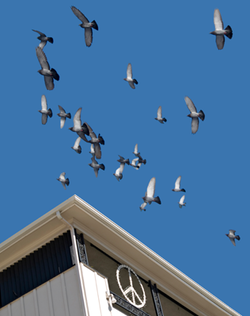
For many people, their home is their greatest asset. It provides shelter, equity, and sense of accomplishment so it is without surprise that most people will do whatever it takes to protect the value and aesthetic properties of their home. Unfortunately, humans are not the only creatures who seek refuge in a house. Pest birds such as pigeons and sparrows find most any house to be a suitable nesting location. Once a bird begins construction on a nest, it is next to impossible to get rid of them.
The solution: Solve the problem before it begins. Factors such as disease and property damage further encourage homeowners to get rid of birds to avoid any potential problems.
Birds are very simple creatures but can present some complex problems when nesting on a home. They will seek out any nook or crevice that will provide sufficient shelter. They prefer to be near a food source, so it is always good to check and see if there is any available food. If there is one, get rid of it. This includes bird feeders, trash, pet food, etc. Once birds have established a viable food source, there are very few things that will deter them. After eliminating any potential food sources, getting rid of birds will be much easier.
When attempting to get rid of birds on a home there are three basic kinds of deterrents. These include physical, visual, and sound deterrents. Each different type of deterrent has its place in keeping a home "bird free". By examining these three types of deterrents, one will have a better understanding of how to get rid of birds on a home and hopefully avoid any potential problems.

 RSS Feed
RSS Feed